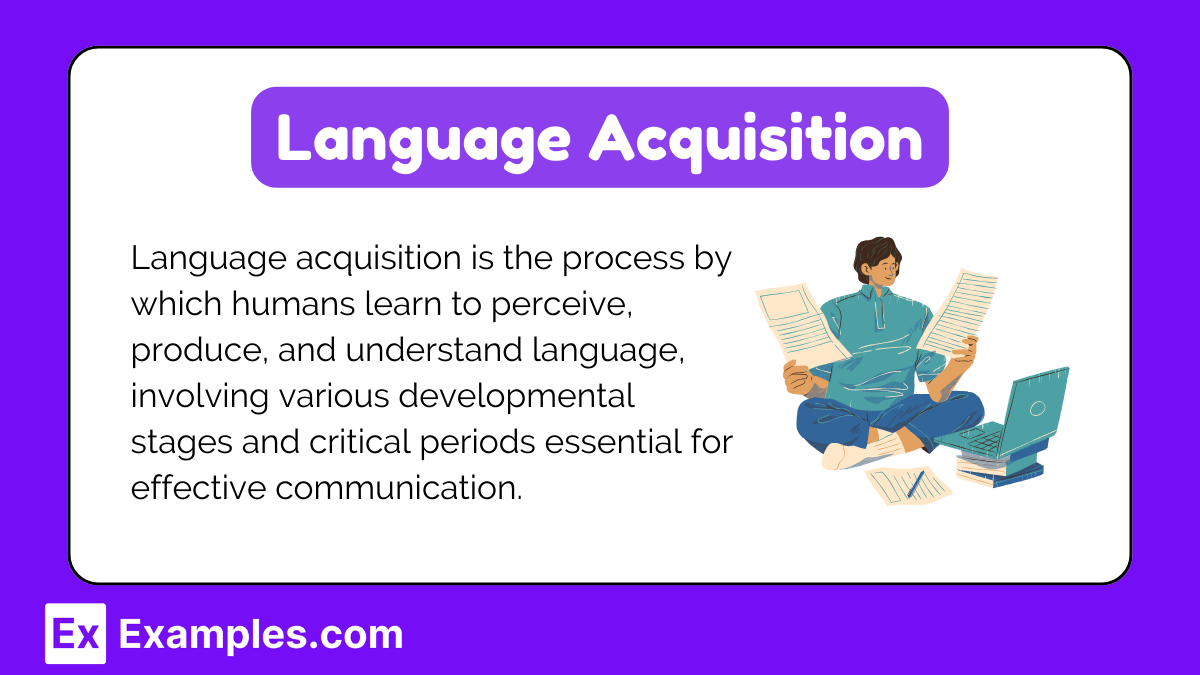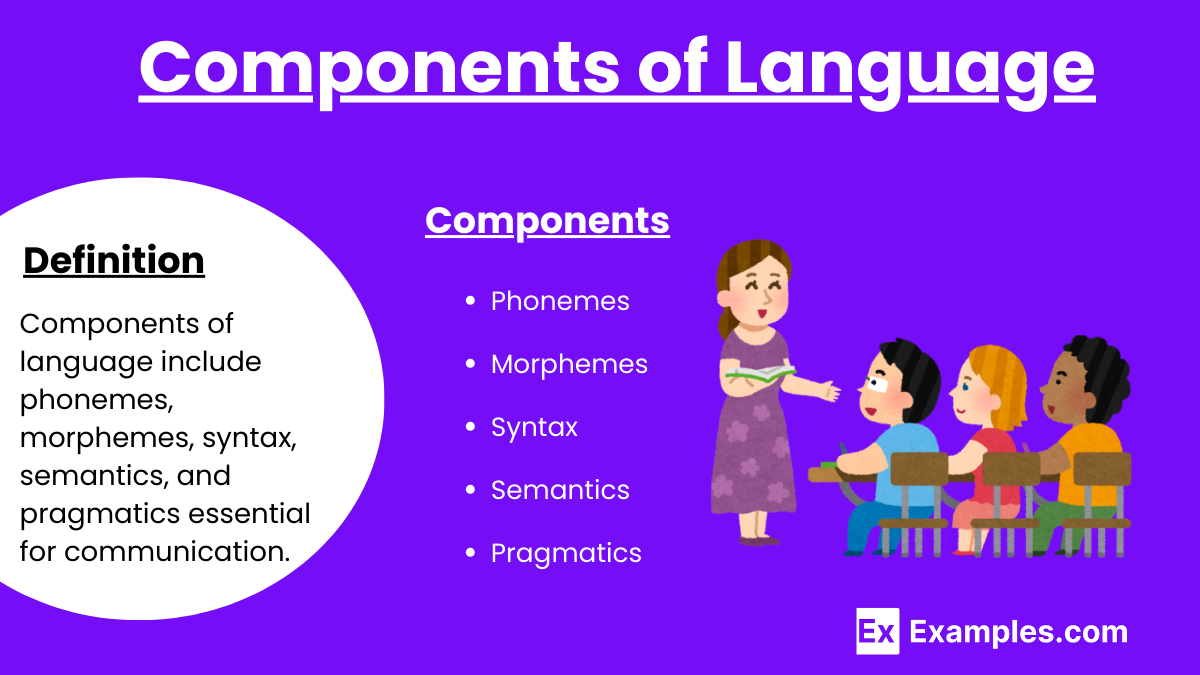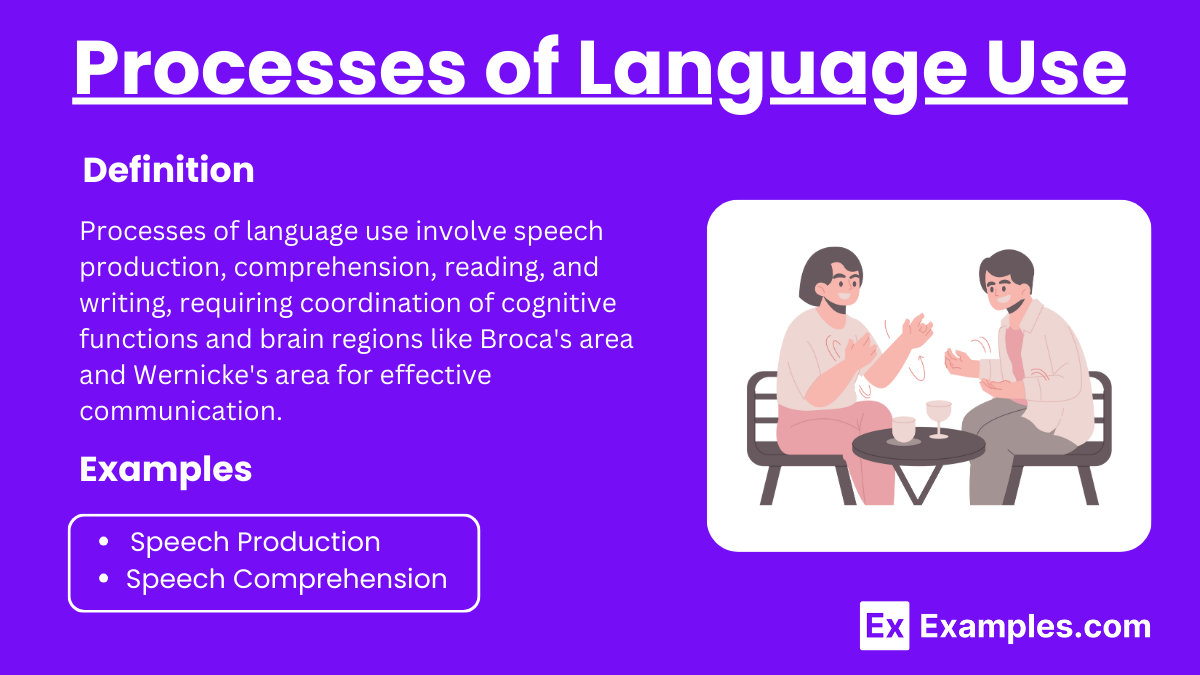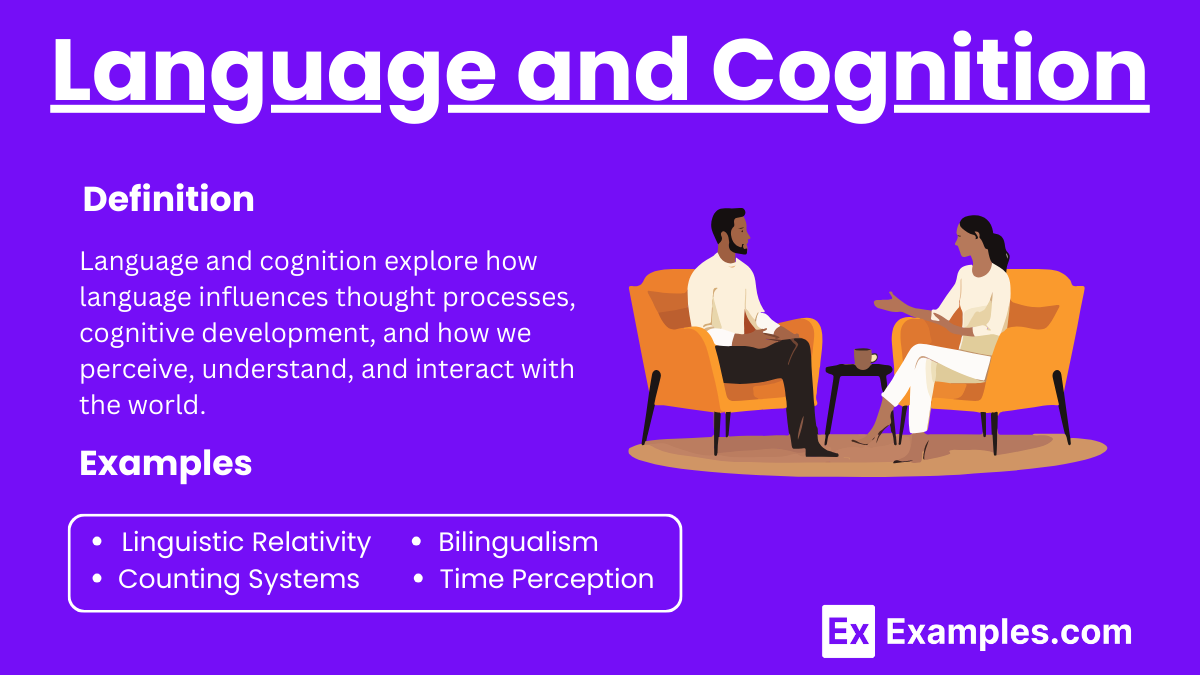Language learning and usage are fundamental aspects of human cognition, allowing for communication and understanding. The processes involve stages of language acquisition, such as phonemes, morphemes, syntax, semantics, and pragmatics. Various theories, including Nativist, Learning, and Social Interactionist, explain these processes. For the AP Psychology exam, understanding these concepts is crucial. Additionally, recognizing cognitive processes in speech production and comprehension, and identifying language disorders like aphasia and dyslexia, is essential for a comprehensive grasp of language psychology.
Learning Objectives
When studying the processes of learning you should aim to understand the stages of language acquisition, the key components of language (phonemes, morphemes, syntax, semantics, and pragmatics), and the main theories explaining language learning (Nativist, Learning, and Social Interactionist). Additionally, grasp the cognitive processes involved in speech production and comprehension, the impact of bilingualism on cognition, and be able to identify and describe various language disorders such as aphasia and dyslexia.
Key Concepts
1. Language Acquisition

Language acquisition is the process by which humans learn to perceive, produce, and understand language information. It involves several stages and critical periods during development.
Stages of Language Acquisition
Pre-linguistic Stage (0-12 months)
Cooing (2-3 months): Repetition of vowel sounds (e.g., "oo," "aa").
Babbling (6-8 months): Combination of consonants and vowels (e.g., "bababa," "dadada").
One-Word Stage (12-18 months)
Single words represent entire sentences or concepts (e.g., "milk" means "I want milk").
Two-Word Stage (18-24 months)
Simple two-word sentences (e.g., "want cookie").
Telegraphic Speech (24-36 months)
Short, simple sentences with essential words (e.g., "give toy").
Complex Sentences (36+ months)
Use of more complex grammar and sentence structures.
Theories of Language Acquisition
Nativist Theory (Noam Chomsky)
Proposes the existence of an innate language acquisition device (LAD) that facilitates language learning.
Universal grammar: All humans are born with a set of grammatical rules common to all languages.
Learning Theory (B.F. Skinner)
Language is learned through reinforcement and imitation.
Children learn language by observing others and receiving positive reinforcement for correct usage.
Social Interactionist Theory (Lev Vygotsky)
Language development is influenced by social interactions and cultural context.
Emphasizes the role of caregivers and social environment in language learning.
2. Components of Language
Language consists of several key components, each playing a vital role in communication.
Phonemes
The smallest units of sound in a language (e.g., /b/, /p/).
Morphemes
The smallest units of meaning in a language (e.g., "un-", "break", "-able" in "unbreakable").
Syntax
The set of rules that dictate the structure of sentences (e.g., word order).
Semantics
The meaning of words and sentences.
Pragmatics
The use of language in social contexts, including tone, gestures, and context.
3. Processes of Language Use
Using language effectively involves several cognitive processes.
Speech Production
Involves planning and articulating words and sentences.
Broca's Area: Brain region involved in speech production.
Speech Comprehension
Understanding spoken language.
Wernicke's Area: Brain region involved in language comprehension.
Reading and Writing
Decoding written text and producing written language.
Involves multiple brain regions, including the angular gyrus.
4. Language and Cognition
Language influences thought processes and cognitive development.
Linguistic Relativity Hypothesis (Sapir-Whorf Hypothesis)
The structure of a language affects its speakers' cognition and worldview.
Cognitive Benefits of Bilingualism
Enhanced executive function and cognitive flexibility.
Delayed onset of age-related cognitive decline.
Practical Applications
1. Language Disorders
Aphasia: Impairment of language abilities due to brain damage.
Broca's Aphasia: Difficulty in speech production.
Wernicke's Aphasia: Difficulty in language comprehension.
Dyslexia: Reading disorder involving difficulty in decoding written text.
2. Educational Strategies
Scaffolding: Providing support and gradually increasing difficulty as the learner gains proficiency.
Interactive Reading: Engaging children in reading through questions and discussions to enhance comprehension.
3. Language Development in Special Populations
Sign Language: Use of visual-manual modality for communication in deaf individuals.
Augmentative and Alternative Communication (AAC): Tools and strategies for individuals with severe speech or language impairments.





